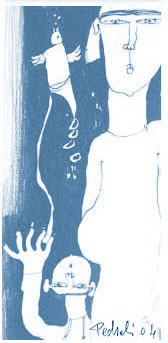Role of opioid antagonists in the treatment of women with glucoregulation abnormalities.
| Role of opioid antagonists in the treatment of women with glucoregulation abnormalities. Guido M, Romualdi D, Lanzone A. Curr Pharm Des. 2006;12(8):1001-12. |
|
Beta-endorphin were detected in the endocrine pancreas and seem able to influence insulin and glucagon release. Hence, endogenous opioids could have a role in glucoregulation and in the pathogenesis of obesity beyond the previously detected effects on appetite. Metabolic abnormalities, such as hyperinsulinemia, insulin-resistance and obesity, are common features of polycystic ovary syndrome (PCOS), and seem to have a pathogenetic role in this disorder. A link between opioids and PCOS-related hyperinsulinism is suggested by the finding of altered central opioid tone and elevated beta-endorphins levels, directly correlated with body weight, in these patients. Furthermore, naloxone and naltrexone significantly reduce the insulin response to glucose load only in hyperinsulinemic PCOS patients. This effect is obtained chiefly through an improvement of insulin clearance. Naltrexone is also able to ameliorate the abnormal gonadotrophins secretion and to improve the ovarian responsiveness in obese PCOS women undergoing ovulation induction with exogenous GnRH. Such effects are believed to be obtained through an amelioration of hyperinsulinemia. Gonadal steroids modulate the opioid system both centrally and in peripheral districts. Nevertheless, the decline of ovarian function does not abolish the opioidergic control of glucoregulation. Post-menopausal period is characterised by a high prevalence of hyperinsulinemia and insulin-resistance. In particular, an association between hyperinsulinemia and increased opioid activity was found in postmenopausal women showing a central body fat distribution. Both naloxone and naltrexone ameliorate the metabolic imbalance also when it appears in the climacteric period, and mainly by increasing insulin clearance. The benefits of naltrexone may represent in the future a useful tool for the treatment of women with hyperinsulinism in the clinical practice. |
|

